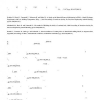HAPTICS
2005
IEEE
14 years 5 months ago
2005
IEEE
A wearable haptic interface has been developed to impart vibrotactile information to its user with the goal of improving situation awareness. The effectiveness of the haptic inter...
HAPTICS
2005
IEEE
14 years 5 months ago
2005
IEEE
Friction cancellation and high gain force feedback are studied for their relative benefits in mitigating the effects of friction in haptic interfaces. Although either technique a...
HAPTICS
2005
IEEE
14 years 5 months ago
2005
IEEE
Wearable haptics necessitates using low power, small, inexpensive tactors that are typically used as pager motors in cellular phones. One of their limitations is that it appears t...
HAPTICS
2005
IEEE
14 years 5 months ago
2005
IEEE
Background: Monitoring body kinematics has fundamental relevance in several biological and technical disciplines. In particular the possibility to exactly know the posture may fur...
HAPTICS
2005
IEEE
14 years 5 months ago
2005
IEEE
Rendering stiff virtual objects remains a core challenge in the field of haptics. A study of this problem is presented, which relates the maximum achievable object stiffness to t...
HAPTICS
2005
IEEE
14 years 5 months ago
2005
IEEE
We describe the design and trial of a remotely conducted surgical master class, using a haptic virtual environment as an integral part of the learning process. In the trial, we li...
HAPTICS
2005
IEEE
14 years 5 months ago
2005
IEEE
Multi-fingers haptic device that enables multiple point of contact is essential for medical education. There is a strong need for palpation training in the detection of subsurface...
HAPTICS
2005
IEEE
14 years 5 months ago
2005
IEEE
In this paper we present a software approach to managing complexity for haptic rendering of large-scale geometric models, consisting of tens to hundreds of thousands of distinct g...
HAPTICS
2005
IEEE
14 years 5 months ago
2005
IEEE

